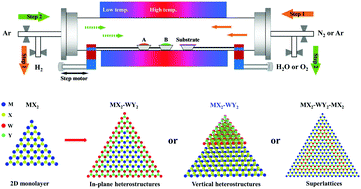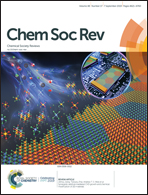Synergistic additive-mediated CVD growth and chemical modification of 2D materials
Abstract
Research on 2D materials has recently become one of the hottest topics that has attracted broad interdisciplinary attention. 2D materials offer fascinating platforms for fundamental science and technological explorations at the nanometer scale and molecular level, and exhibit diverse potential applications for future advanced nano-photonics and electronics. The chemical vapor deposition (CVD) technique has shown great promise for producing high-quality 2D materials with superior electro-optical performance. However, it is difficult to synthesize continuous single-crystal 2D materials with large domain sizes and good uniformity due to the low vapor pressure of their precursors. It has been observed that the addition of selected synergistic additives to the CVD process under mild conditions can result in uniformly large-area and highly crystalline monolayer 2D materials with exceptional optical/electrical properties. Moreover, the 2D material-based devices chemically modified by synergistic additives can achieve superior performances compared to those previously reported. In this review, we compare several typical synergistic additive-mediated CVD growth processes of 2D materials, as well as their superior properties, and provide some perspectives and challenges for the future of this emerging research field.



 Please wait while we load your content...
Please wait while we load your content...